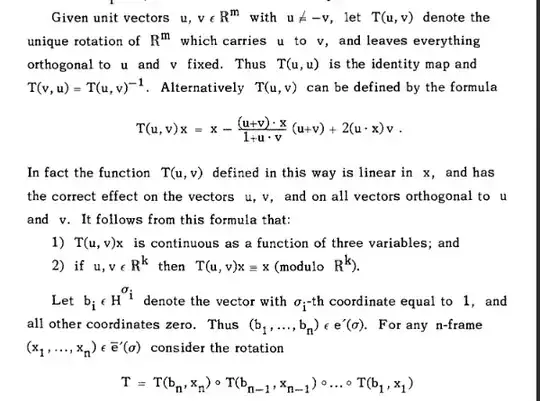The function in question appears in lemma $6.3$ of Milnors characteristic classes. Let $\langle \cdot, \cdot\rangle$ denote the dot product on $\mathbb{R}^m$
Let $u,v \in \mathbb{R}^m$ be unit vectors with $u \neq -v$. Let $T(u,v)$ denote the unique rotation of $\mathbb{R}^m$ which carries vector $u$ to vector $v$ and leaves everything orthogonal to $u$ and $v$ fixed. Alternatively, $T(u,v)$ can be defined by:
$$T(u,v)(x)=x - \frac{\langle(u+v),x\rangle}{1+\langle u,v\rangle}(u+v)+2\langle u,x\rangle v$$
Can somebody help me understand why this formula above works? I'm having troubles understanding why this formula gives the desired rotation. Thank you.
